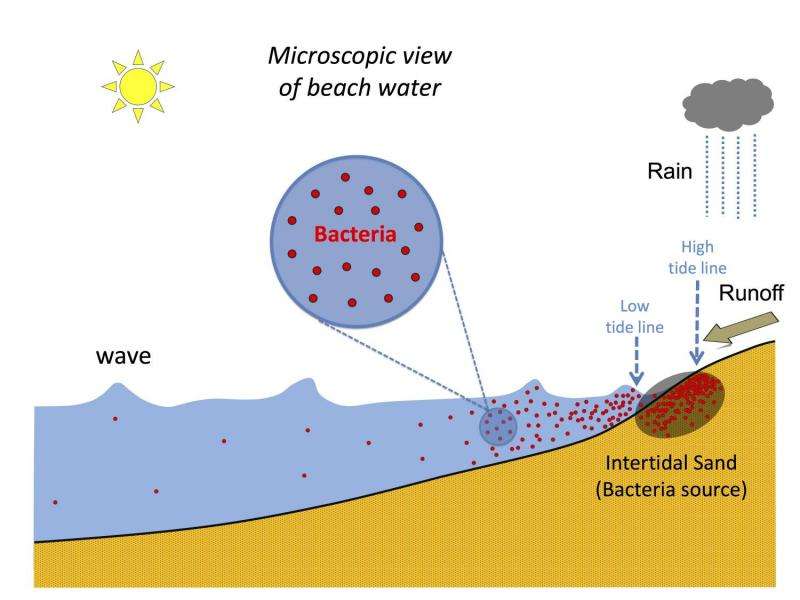New tool better protects beachgoers from harmful bacteria levels

An international team, led by researchers at the University of Miami (UM) Rosenstiel School of Marine and Atmospheric Science, has developed a new, timelier method to identify harmful bacteria levels on recreational beaches. The new model provides beach managers with a better prediction tool to identify when closures are required to protect beachgoers from harmful contaminates in the water.
"The development of this new model has allowed us, for the first time, to estimate contamination levels on beaches subject to nonpoint source pollution, in particular from beach sand and runoff from storms," said the study's authors.
The new method provides beach health managers with an easily accessible computer model to predict harmful bacteria levels from all potential pollution sources. The team optimized and validated their model using a 10-day monitoring dataset from the popular Virginia Beach in Miami, Florida. The predictive model uses information on waves, tides, rainfall and solar radiation to more accurately predict harmful bacteria concentration and movement along the shore allowing for improved beach management decision-making.
Federal and state laws require water monitoring of fecal indicator bacteria, such as enterococci and fecal coliform, at recreational beaches to protect beachgoers from harmful water contamination levels. Excess levels of these harmful bacteria prompt beach advisories and closures to minimize human health risks. Water contamination from fecal indicator bacteria can result from "point-source" pollution, such as a sewage outfall, or "nonpoint source" pollution from storm-water runoff, or animal and human inputs.
Current methods assess fecal bacteria contamination levels by direct sampling of water from beaches, as well as by using complex computer modeling. Direct sampling methods requires a one-day laboratory analysis to access the health risk to humans at a particular beach. Therefore, a 24 to 48 hours wait period after sampling is required before any beach closure or advisory is issued. In addition, the current computer-based model requires high computing power, which is often inaccessible to beach closure decision managers, and can only predict contaminates from known sources of pollution, such as sewage outfalls.
The National Science Foundation-funded study, titled "A predictive model for microbial counts on beaches where intertidal sand is a primary source," was published in the May 15 issue of the journal Marine Pollution Bulletin.
Journal information: Marine Pollution Bulletin
Provided by University of Miami


















